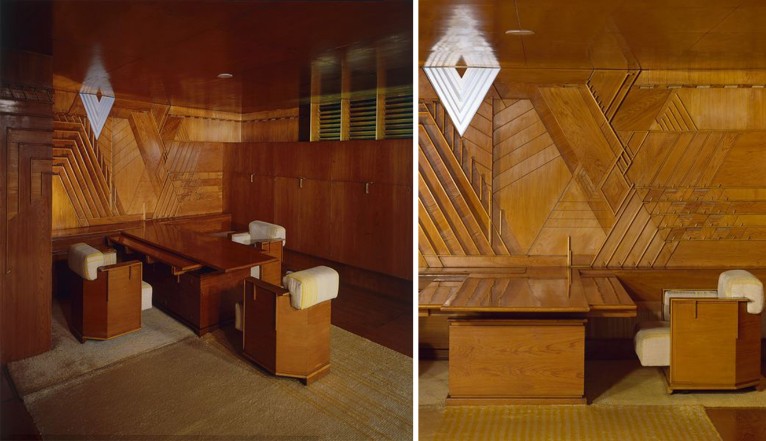
Kaufmann Office, a rare Wright-designed office interior has been hidden away in the V&A’s storage for the last 15 years. This forgotten masterpiece is the only Frank Lloyd Wright interior outside the United States, now ready to be displayed in London’s future V&A East in 2023.
Designed by the most significant American architect of the twentieth-century, the office for Edgar J.Kaufmann it is unusual both in that it retains all of its original woodwork, furniture, carpets and textiles.
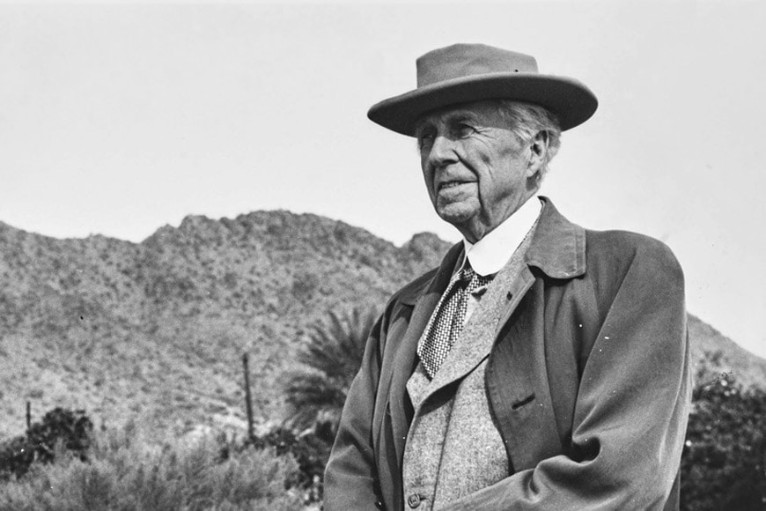
The room was designed around 1929 for Wright’s most distinguished patron, department store owner Kaufmann, who installed it in his store in downtown Pittsburgh. It was Kaufmann who also commissioned Fallingwater, the Pennsylvania country house suspended over a waterfall that is now regarded as the Wright’s masterpiece.
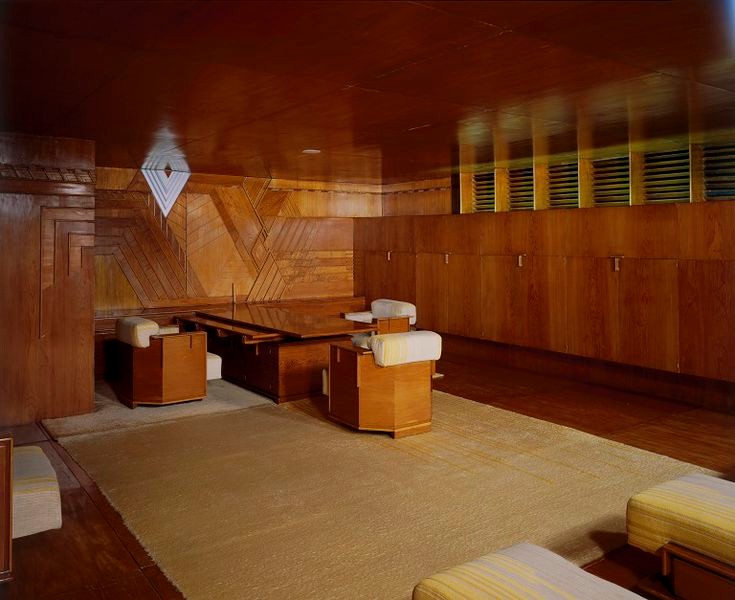 © Victoria & Albert Museum; ARS, New York, and DACS, London.
© Victoria & Albert Museum; ARS, New York, and DACS, London.
Although a small project compared to Fallingwater, the office was one of a group of designs for Kaufmann which included a planetarium and office building. Perhaps more importantly, the office was part of an unusually productive period for the architect – often referred to as his ‘second career’ or ‘second golden age’ – one which, in addition to Fallingwater, saw the design of the Johnson Wax Building, the series of Usonian houses and numerous exhibitions and publications of his work.
 © Victoria & Albert Museum; ARS, New York, and DACS, London.
© Victoria & Albert Museum; ARS, New York, and DACS, London.
Described by Wright as a “marquetry plywood wall”, Kaufmann Office is a fine example of Wright’s decorative tendencies as well as his interest in triangular and diagonal forms and, ultimately, of the relationship in his work between nature and geometry.
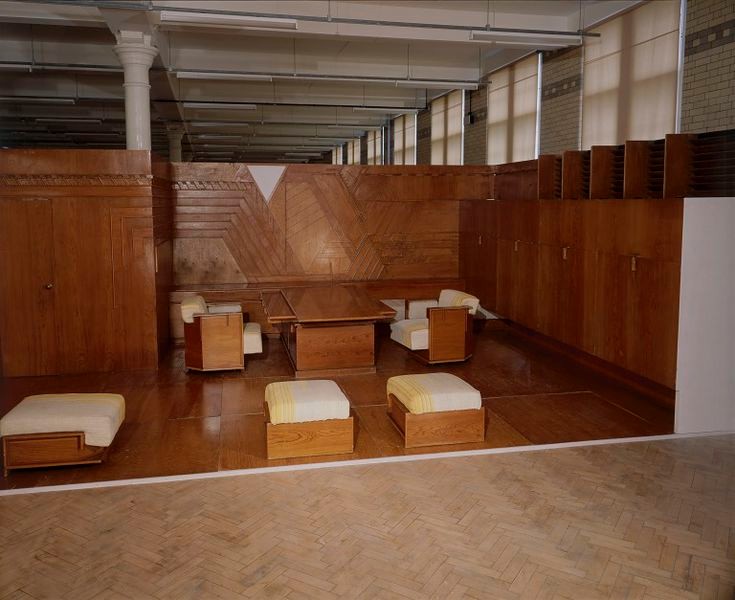 © Victoria & Albert Museum; ARS, New York, and DACS, London.
© Victoria & Albert Museum; ARS, New York, and DACS, London.
Although designed for a wealthy client, the office was constructed largely of modest materials which became typical of Wright’s better-known Usonian houses: cypress plywood and cypress-veneered blockboard. Built-in and freestanding furniture of advanced design played an important part in the interior, defining the essentially rectangular space of the room. The monumental and sculpted presence of the furniture was overshadowed by the highly unusual mural above Kaufmann’s desk.
The room’s carpet and textiles were designed by Loja Saarinen who headed the textile workshop at the prestigious Cranbrook Academy of Art in Michigan, USA.
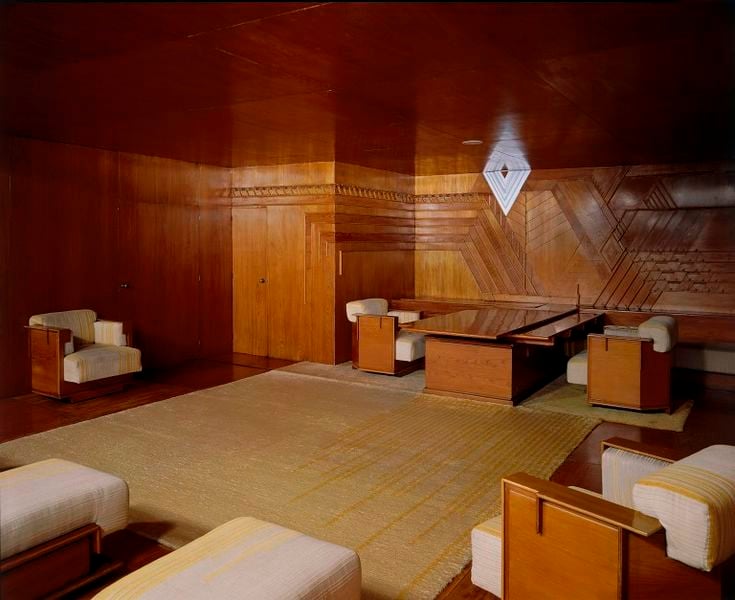 © Victoria & Albert Museum; ARS, New York, and DACS, London.
© Victoria & Albert Museum; ARS, New York, and DACS, London.
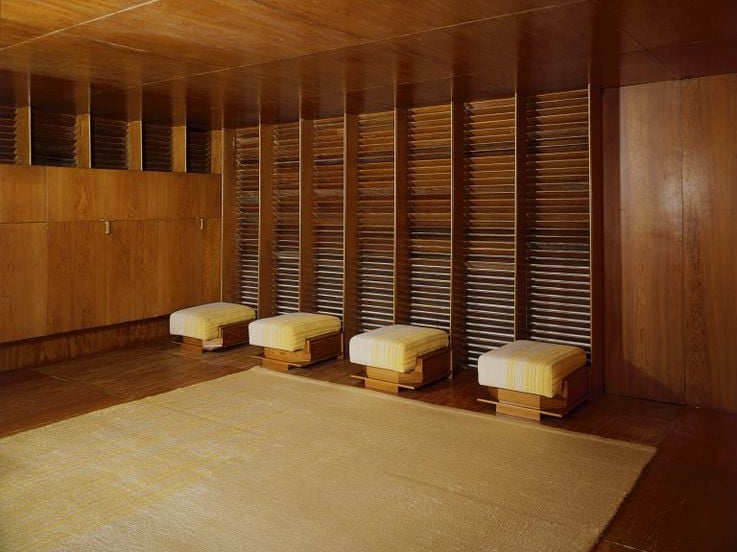 © Victoria & Albert Museum; ARS, New York, and DACS, London.
© Victoria & Albert Museum; ARS, New York, and DACS, London.
***********
Cover Photo: © Victoria & Albert Museum; ARS, New York, and DACS, London.


-

Claudio De Santis
commentIl genio (vero) è genio anche nei piccoli progetti........